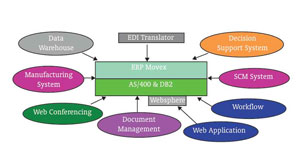
Optimising Indian retail supply chain by CPFR
CPFR is a concept that aims to enhance supply chain integration by supporting and assisting joint practices, the benefits of which include enhanced relationship, greater sales, category management, improved product offering, and inventory reductions, emphasise Kushagra Prakash and Vivek Agarwal.
CPFR is a concept that aims to enhance supply chain integration by supporting and assisting joint practices, the benefits of which include enhanced relationship, greater sales, category management, improved product offering, and inventory reductions, emphasise Kushagra Prakash and Vivek Agarwal.
Indias retail market is likely to touch a whopping Rs 47 lakh crore by 2016-17, expanding at a compounded annual growth rate of 15 per cent, a Yes Bank-Assocham study reveals. Organised retail, which comprised a meagre seven per cent of overall retail market in 2011-12, is estimated to grow at a CAGR of 24 per cent and attain 10.2 per cent share of total retail by 2016-17.
On the supply side, retail sector growth will be backed by expansion plans of existing players and the entry of new players, the study said. Hence, it is important for every retailer to have a strong vendor relationship so that he can achieve maximum from this growing market base. CPFR will help both retailer and vendor to have more reliable understanding.
Introduction
Collaborative Planning, Forecasting, and Replenishment (CPFR) is a concept that aims to enhance supply chain integration by supporting and assisting joint practices. CPFR seeks cooperative management of inventory through joint visibility and replenishment of products throughout the supply chain. Information shared between suppliers and retailers aids in planning and satisfying customer demands through a supportive system of shared information. This allows for continuous updating of inventory and upcoming requirements, making the end-to-end supply chain process more efficient. Efficiency is created through the decrease in expenditures for merchandising, inventory, logistics, and transportation across all trading partners. CPFR began as an initiative by WALMART in 1995. VICS organisation currently is an organisation which helps industries to implement CPFR. CPFR deals with various collaboration tasks like within Strategy & Planning, Collaboration Arrangement, Demand & Supply Management, Execution (Order Generation) and Analysis. Three kinds of collaborations, which are generally studied in it, are collaborative assortment planning, store replenishment collaboration, and retail event collaboration.
CPFR interoperability is also very important at the time when a retailer goes in collaboration with several actors in its supply chain.
Various industries including JC Penney and Zara have implemented CPFR.
Collaboration
Only by working together toward the same goal can any partnership reward both parties. If the retailers version of just in time means vendor holds the goods until my stores need it, or the manufacturer rewards its team solely on selling more product than last year, one side or the other gets squeezed on profits by carrying too much of the inventory load. Instead of win/win, it is "I win, you figure out how to win." However, if the manufacturer and retailer can agree that their common goal is to satisfy as many customers as possible, at the highest profit to both parties, they can each win and both make more money.
This new type of collaborative partnership requires a long-term commitment to openly communicate, and share information. Partnering on strategy as well as execution requires trust and commitment, but is the only sustainable way to grow sales and profits. Retailers and vendors who take this long-term view with a majority business will maintain a true competitive advantage. Step one in collaboration means agreement to confidentiality, a means to resolve disputes, supply chain scorecard metrics and common incentives or goals (i.e, both parties rewarded on profitability, not just sales volume). Goals should focus on driving the most profitable sales growth possible, and can also inclu



